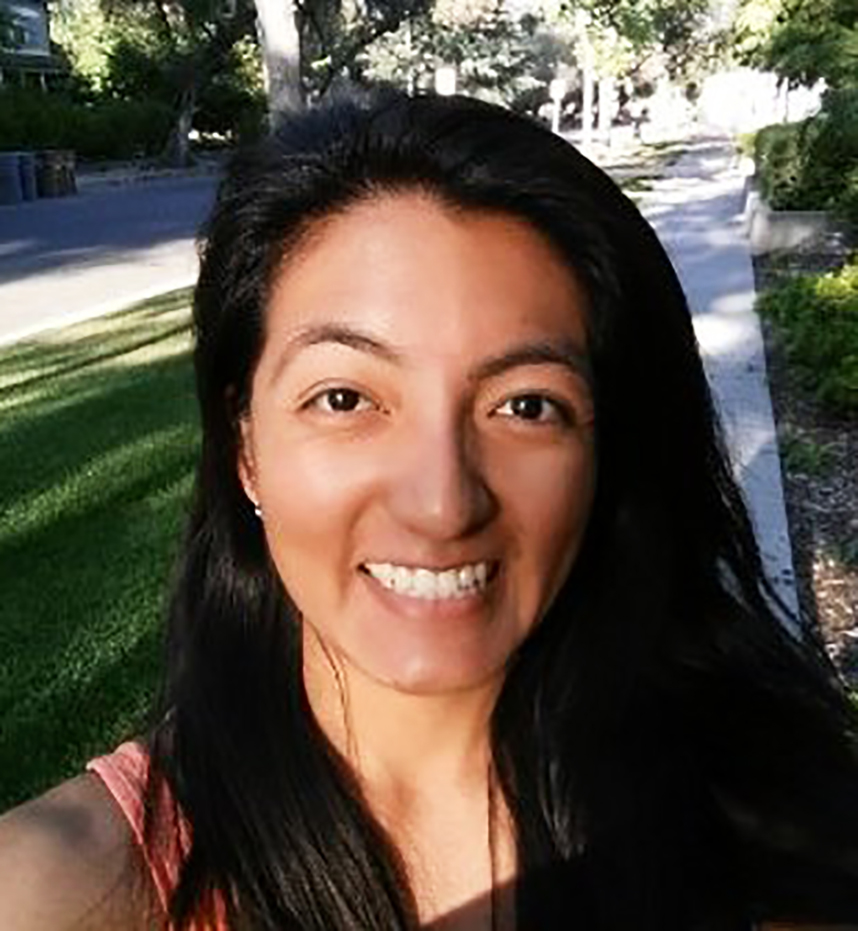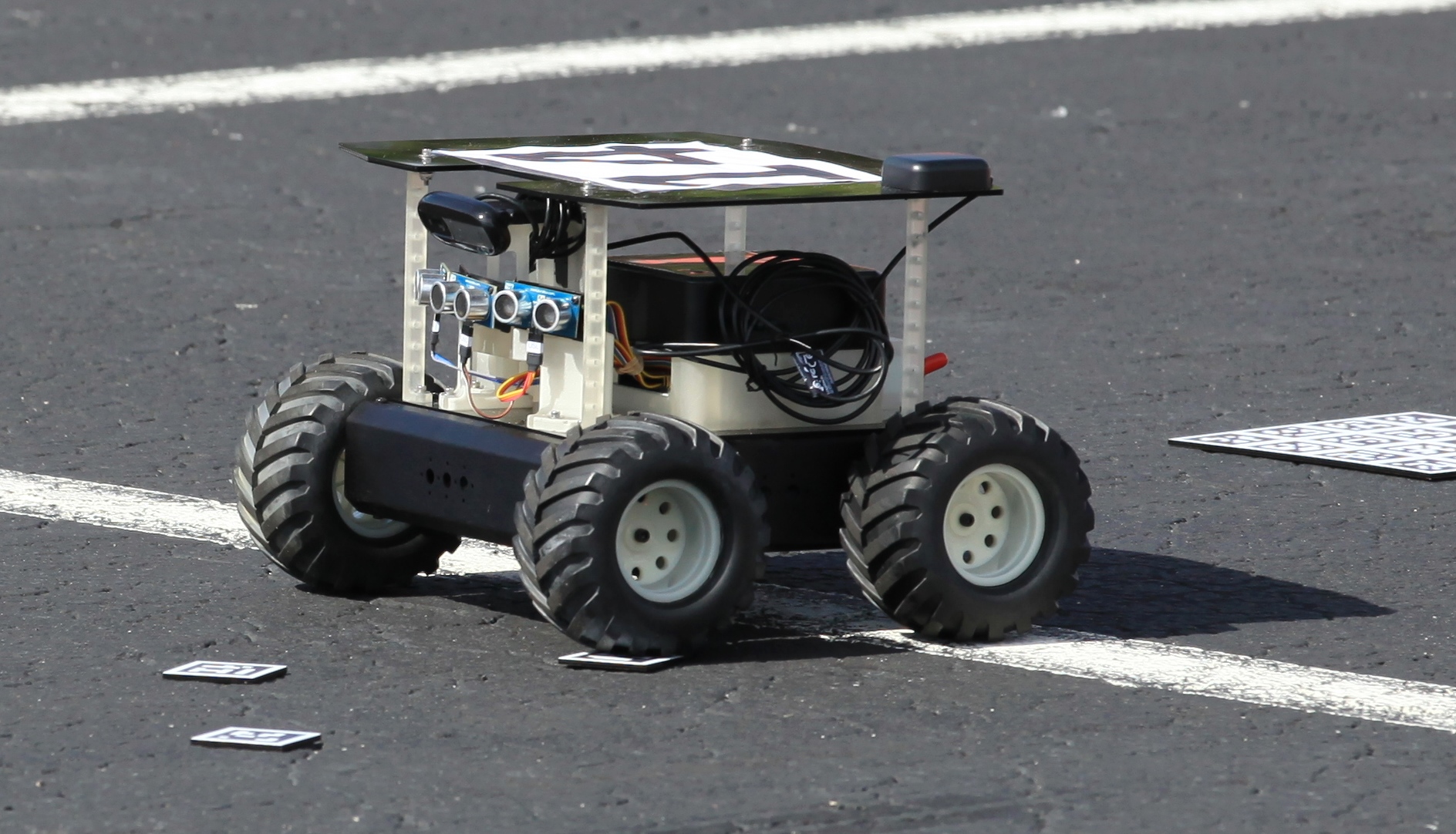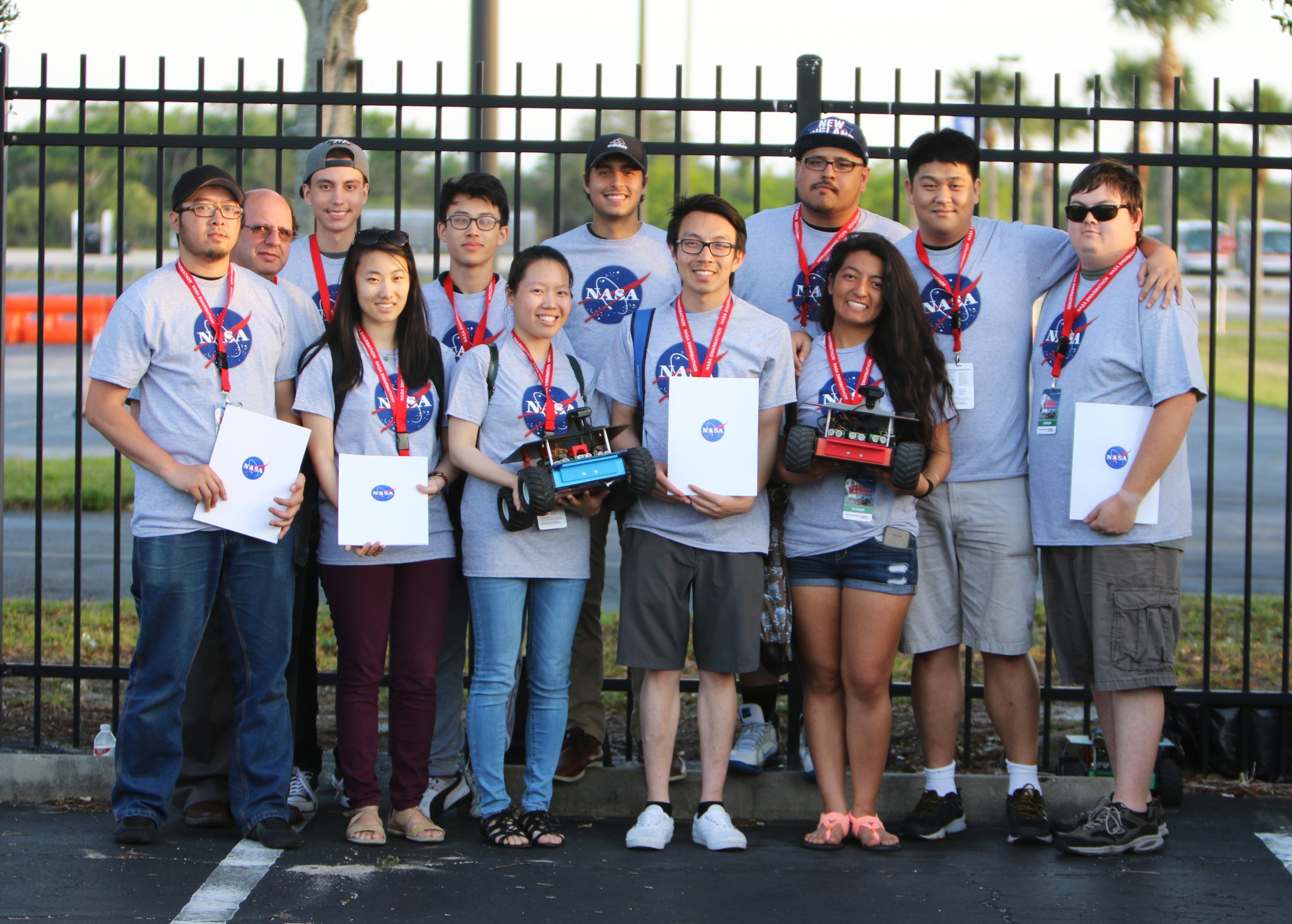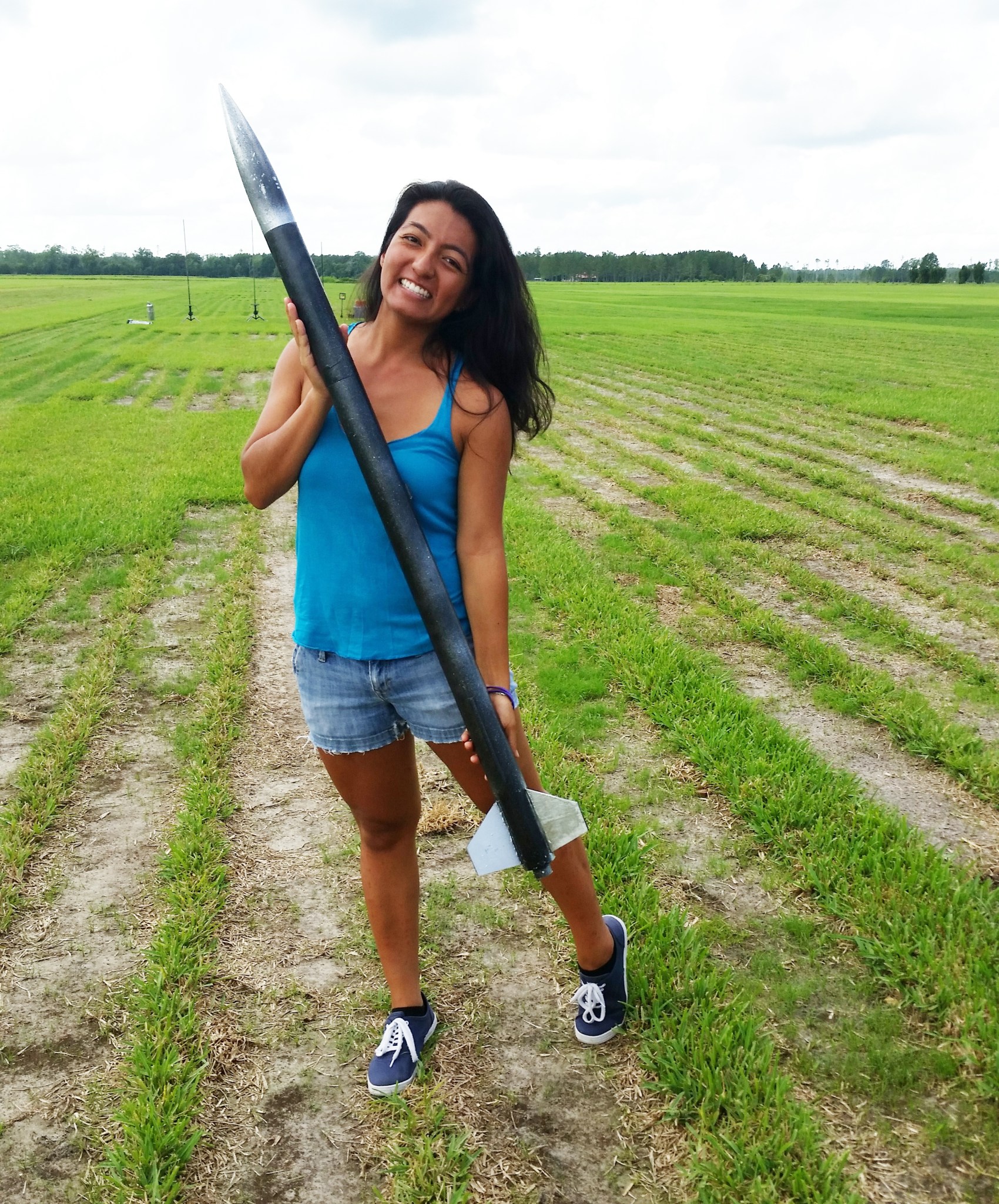By Bob Granath
NASA’s Kennedy Space Center, Florida
For Kristiana Rendón, studies in computer science led to multiple opportunities to apply what she is learning to educational programs at NASA’s Kennedy Space Center in Florida. During the past year, she participated in the first annual Swarmathon and, later in the summer, the center’s Launching to Learn program.
“Both were great experiences,” Rendón said. “I think this helped me understand that software development really is my career goal.”
Originally, computers were not her objective
“After I received a bachelor’s degree in psychology,” said Rendón, “I planned on going into the medical field.”
A Los Angeles native, Rendón graduated from the University of California, Riverside, in 2014, but changed directions as she began work on a master’s degree.
“Last year, I took courses in computer science at Pasadena City College,” she said. “My professor told us about an opportunity to participate in a NASA challenge to develop software codes and algorithms for small robots.”
The small robots are known as “Swarmies.” They look like small radio-controlled cars, but are designed to look for “resources” in the form of barcodes. In the future, similar devices may help find resources once astronauts land on Mars.
In the spaceport’s first annual Swarmathon, students from 24 colleges and universities across the nation were selected to develop software code to operate these innovative robots. The event took place April 20-21, 2016, at the Kennedy visitor complex.
For students such as Rendón and her team from Pasadena City College, participation in the Swarmathon helped improve skills in robotics, as well as in integrating hardware and software. NASA benefits as their developments help the agency refine technology for future human space exploration.
“We had several opportunities to interact with NASA experts in the computer field,” Rendón said. “They not only helped us with our Swarmie robots, but gave us insights on how we can develop more advanced robotics in the fields of aerospace and spaceflight.”
While the Swarmathon program focuses primarily on writing software code, requirements include reporting on how participants inspire younger students. Rendón explained that her team from Pasadena City College spoke to elementary and high school groups. Like NASA’s educational programs, the aim is to encourage students to consider careers in science, technology, engineering and math, or STEM.
“We developed a challenge in which the students put a bucket over their heads before looking for candy on the floor,” she said. “It helped them understand the challenges of a Swarmie looking for barcode or a robot on Mars looking for resources.”
According to Theresa Martinez of Kennedy’s Education Projects and Youth Engagement Office, Rendón’s enthusiasm makes her a great ambassador, encouraging others.
“Kristiana’s team did extremely well,” she said. “Their outreach effort was led by Kristiana, and they won that category.”
Martinez manages the Minority University Research and Education Project (MUREP) STEM Engagement activities.
In the Swarmathon competition, college and university teams developed search software for the small robots to operate autonomously. During the competition, the teams’ algorithms operated the Swarmie robots in an official competition arena. Groups were ranked by the number of barcodes representing “resources” their Swarmie located in a specified period of time.
“We found that programing the Swarmies can be really difficult,” Rendón said. “While it didn’t go as well as we hoped, we learned a great deal from talking to students from other colleges and the NASA engineers who were there to assist.”
Having spent time at Kennedy during the Swarmathon and given an opportunity to tour some of the center facilities, Rendón was eager to come back.
“After the Swarmathon, I applied for Launching to Learn,” she said. “I was thrilled when I was selected.”
Starting on July 11, the Launching to Learn summer program guides college-level students in understanding concepts needed to develop rockets with guidance from experts at Kennedy.
“We started by each participant designing, building and launching a rocket,” Rendón said.
The more complex task involved creating a more complex rocket in a team effort that introduced the students to many of the organizational concepts used by NASA.
“I was selected by my group to be our team leader,” Rendón said. “That meant learning each person’s strengths and weaknesses, then assigning tasks based on that. It helped us learn how people need to work as one.”
It all comes together on launch day.
“Seeing our rocket lift off was awesome,” Rendón said. “It really gives you a sense of accomplishment.”
The Launching to Learn Program also included tours of numerous facilities at Kennedy and opportunities to hear from agency leaders.
“Meeting and hearing from experienced individuals at NASA was great,” Rendón said. “They were always helpful and willing to answer our questions.”
Rendón says her biggest takeaway from the two experiences was inspiration.
“It was not only encouraging, but gave me the motivation to keep working on a master’s degree in computer science,” she said. “Having the experience of just being at the Kennedy Space Center was really fun.”
Martinez noted that she was impressed when Rendón came back to Kennedy for Launching to Learn.
“That kind of drive, along with her outgoing and warm personality makes her a standout student,” she said. “I look forward to seeing her accomplishments as she continues her education.”
In addition to pursuing interests in computer technology, Rendón enjoys reading, listening to music and outdoor activities, such as being an assistant SCUBA diving instructor. She also plays saxophone in the marching and concert bands at Pasadena Community College.
“I was in the Tournament of Roses Parade Honor Band,” she said.
After Rendón earns her degree, would she like to work for NASA?
A seven-mile drive north of her college campus is NASA’s Jet Propulsion Laboratory, the leading agency center for robotic exploration of the solar system.
“Working at JPL or any NASA center would be really amazing,” she said. “I’ve been networking and connecting with people I’ve met at NASA. I think my experiences at Kennedy will definitely help open doors for me in the future.”
































